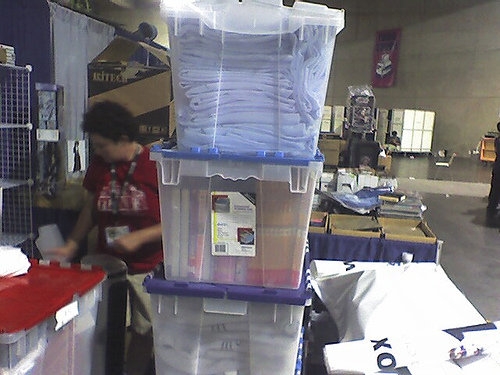When I first got to Japan, I had plenty of culture shock related to auto- mobiles. Cars are very important to the Japanese, and in all cities except for the largest ones, a car is really required to get anything done, just as in the States. Auto theft is quite uncommon in Japan, so it’s not at all rare to see someone leave his beautiful Nissan Fairlady Z parked in front of the combini (convenience store) with the engine running. The idea that his car might be stolen just doesn’t enter into the thinking here, so it’s perfectly safe. Japanese cars have the steering wheel on the right side, as in England and Australia, and the Japanese have perfected the art of starting the car without getting in it, since the ignition is easily accessible on that side of the vehicle. When stopped at a light at night, it’s considered good manners to turn your headlights down to “park” so you don’t blind the person in front of you, and when someone lets you go ahead of them in traffic, flashing your emergency lights at them once or twice conveys your thanks — although this is done by polite Tokyo drivers, not Gunma locals, who have bad driving manners. Japanese love their cars, and there are many interesting products that allow drivers to deck their vehicles out, including bizarre and interesting accessories, gaudy air fresheners, and flashing lights that are great for picking up girls.
I’ve talked before about how languages reflect the personalities of the people who speak them, and vice-versa. English speakers are direct — usually saying “yes” or “no” rather than speaking in more subtle shades of grey as the Japanese do — in part because the language is set up that way. Japanese is a very indirect language, with the subject and even the object often omitted from sentences because both the speaker and listener usually know what is being talked about, which at times can be confusing. If character A says they love vanilla ice cream but leaves this word unstated, character B might get confused and think that they themselves are the object of character A’s affection, a basis for may misunderstandings in anime. Another vehicle for indirectness is the passive voice, that bane of high school English teachers, used infrequently in English, but quite common in Japanese. If the boss made a bonehead decision that was a bad idea for the company, you might complain about him in English directly, e.g. “The boss upstairs decided that we should contract with a Russian spam company to increase website traffic.” In Japanese, where you’d be less likely to take your boss to task in front of others, passive speech would likely be used, to avoid naming the person responsible, e.g. “It’s been decided that…”
If you came by our booth at the San Diego Comicon, we probably handed you some Japanese pocket tissue. One of the most popular methods that companies have to advertise their services to consumers, printing pocket tissue with advertising on it is a staple in many industries, including home remodeling companies, banks and the high-interest finance companies that have become so popular since the bursting of Japan’s economic bubble. When we looked for a way to tell people about our little Japan-based web shop, we naturally turned to the famous Japanese pocket tissue, since it’s universally convenient — you never know when you’re going to need tissue — and totally Japanese. We give pocket tissue with almost every order, too, in every case where the square shape of the tissue won’t damage your order (such as an order of thin magazines, which might be bent by us including a tissue packet inside). So if you want to get some great pocket tissue from Japan, make an order today! (We also have a few types of tissue on the site, such as Domo-kun
J-List genuinely wants to spread interest in Japan in all it’s mysterious forms. For those who’d like to learn to read and write Japanese, the starting place is hiragana and katakana, the two basis syllable-based writing systems used in the language. We’ve got a great new set of study cards that make it easy to learn hiragana and katakana using visual cues, equating a kana character with a picture that helps you memorize it. Check it out now!
















